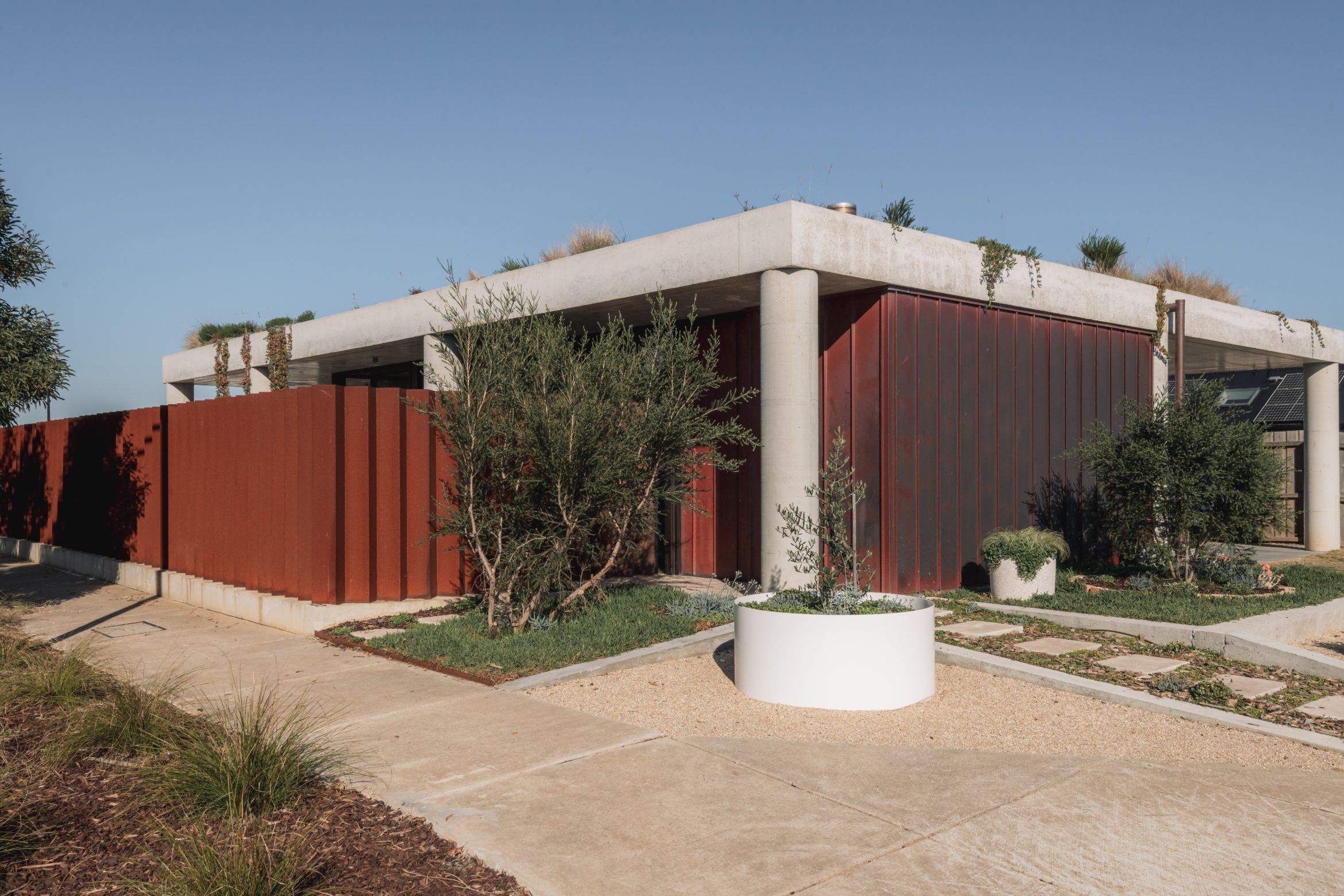Torterra House, conceived by Lachlan Shepherd Architects, is an exercise in biophilic design principles yielding a thermally consistent house tailored for practical use. The latent site situated over a reclaimed water basin was repurposed into a design engineered on a simple grid of concrete columns which are, in turn, centred over concrete piers that anchor the building into suitable foundation material. The result is a structure reminiscent of a simple commercial car park.

The layout – bespoke to the occupants, a family of three – comprises dual bedrooms adjacent to a large bathroom, an amenities area and a European laundry. The domesticated zones are orientated north for solar access with direct access to a semi-private open space and an alfresco zone flanked by a plunge pool.
Modest in expression, the residence is minimalist yet robust in nature. The durable palette, with its legion of concrete and copper cladding, requires little to no maintenance over its life cycle. Cultivating a strong base of thermal mass, reverse block veneer walls are used for the perimeter infills while internally face blockwork delineates each zone. Additionally, recycled brickwork has been used to create anchor points for joinery components and internal divisions. The off-form concrete ceiling in the living area was constructed with offset Douglas Fir timbers of vacillating sizes, imprinting a playful pattern that visually softens the concrete.
Suggested: Coastal character with serious sustainability

The perpetual theme of thermal mass is amplified via a concrete ground slab and extensive north-facing glazing allowing passive heating to occur directly onto the floor slab throughout the cooler months. Conversely, a vast self-maintained rooftop garden featuring native and indigenous planting provides a thermal break above the off-form concrete roof structure below. The furnishings counterbalance the brutality of internal surfaces with a series of built-in leather daybeds and couches.
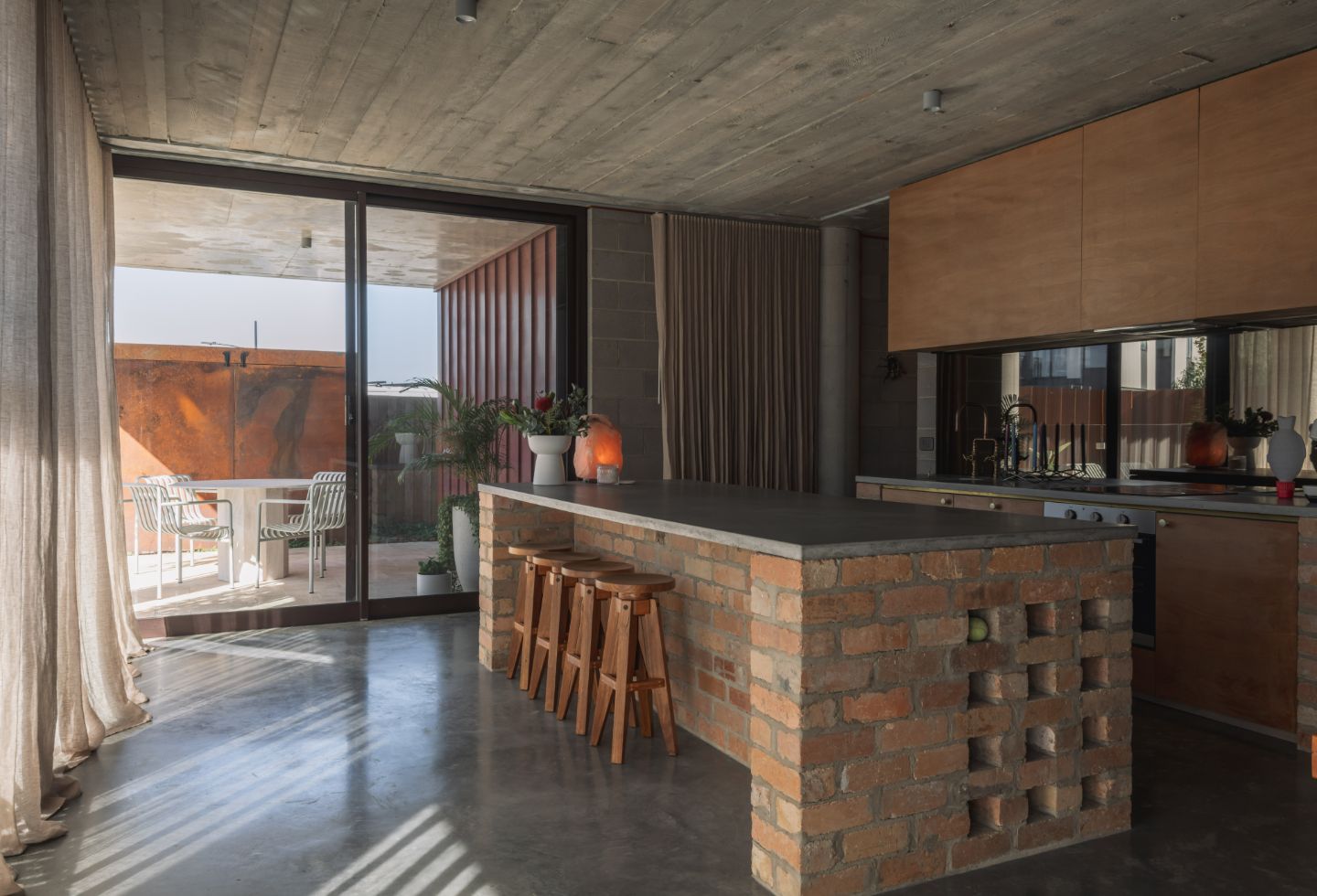
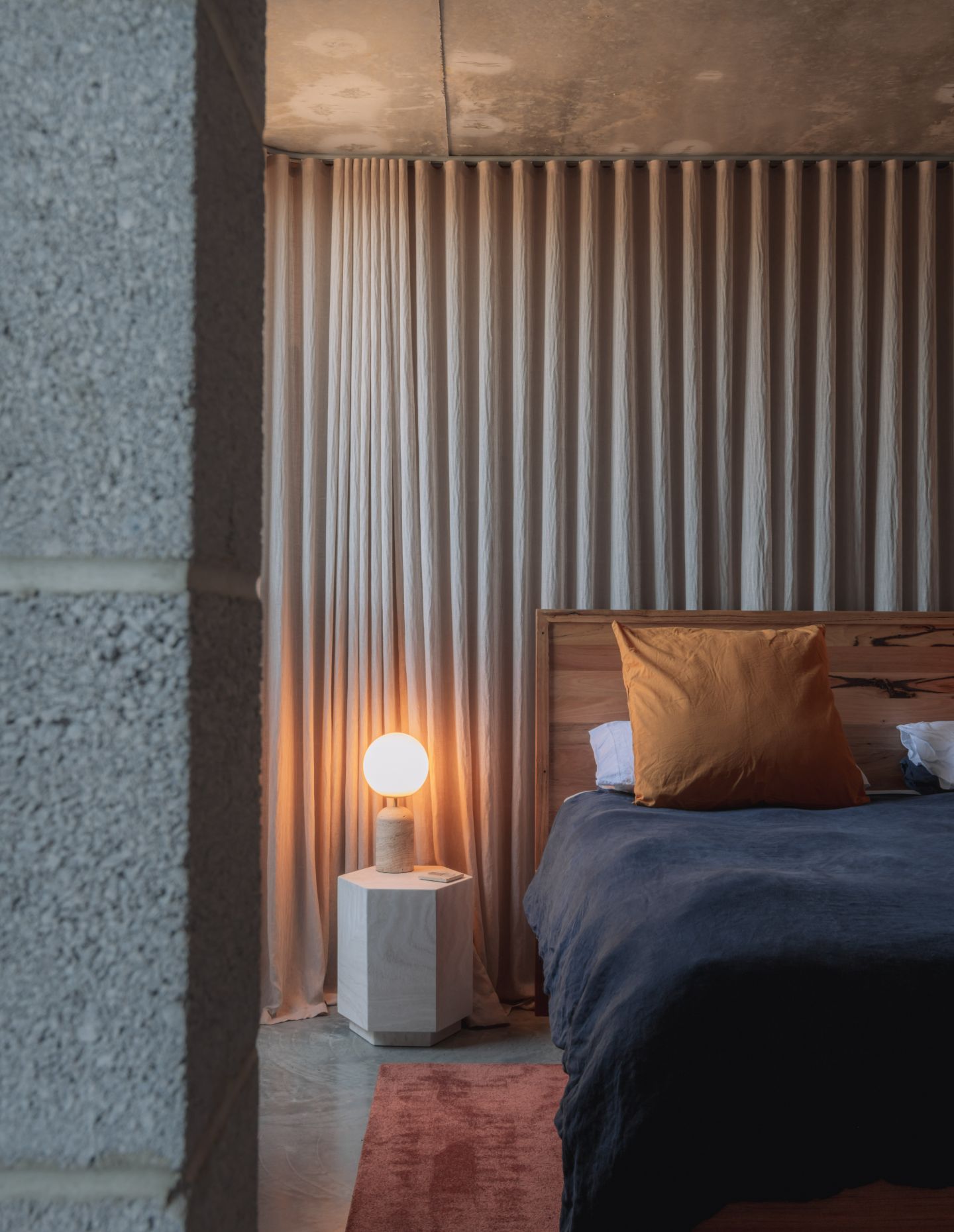
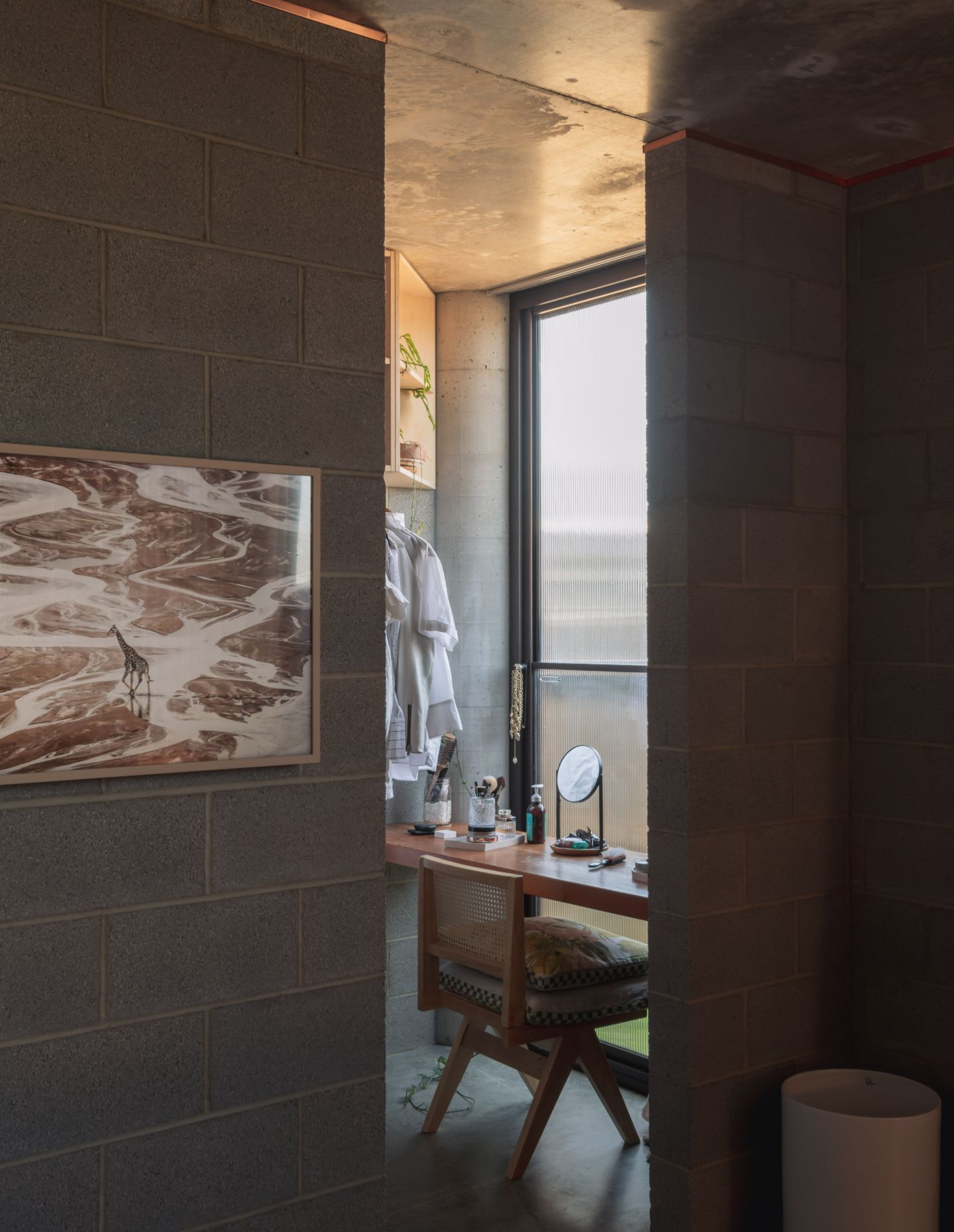
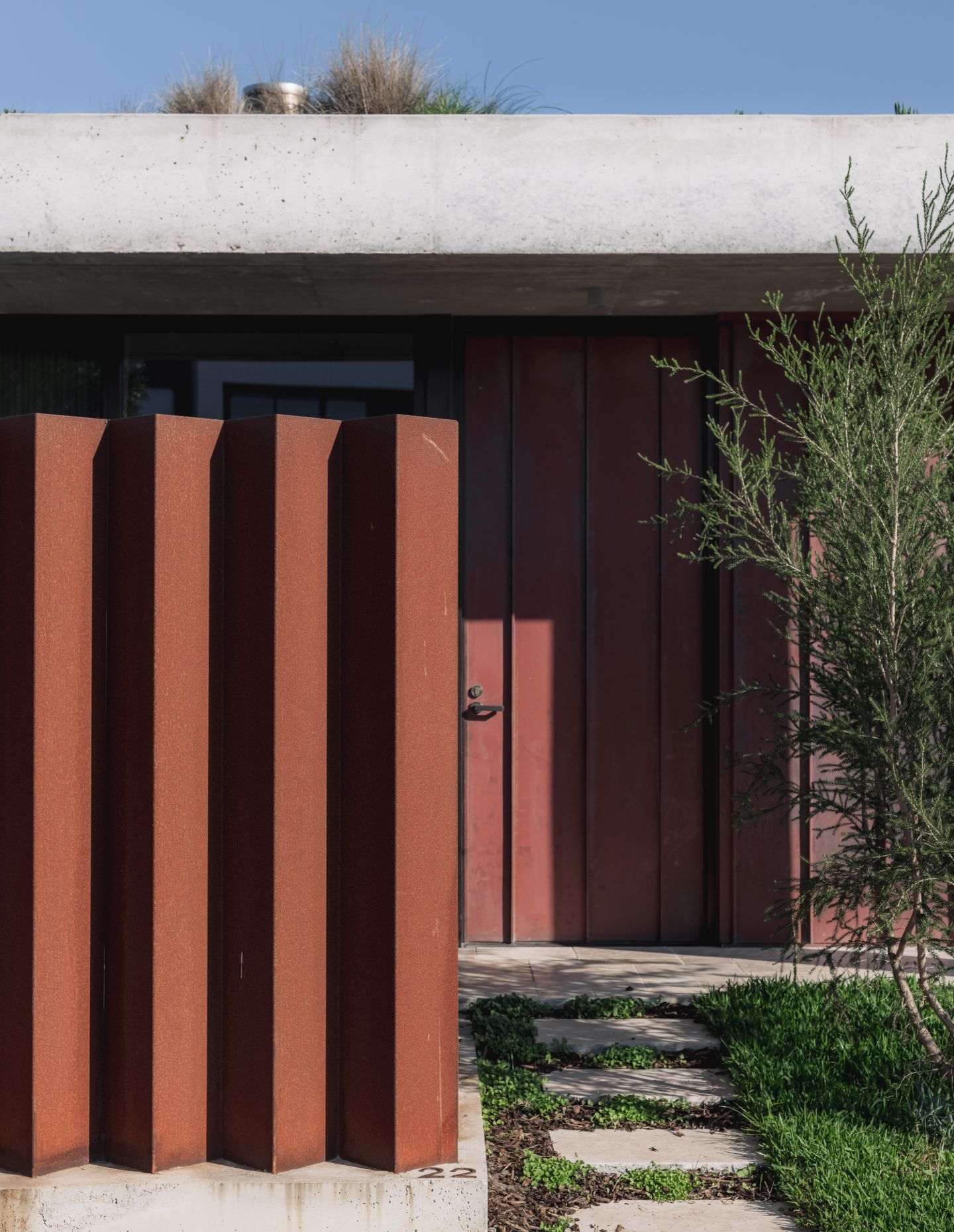
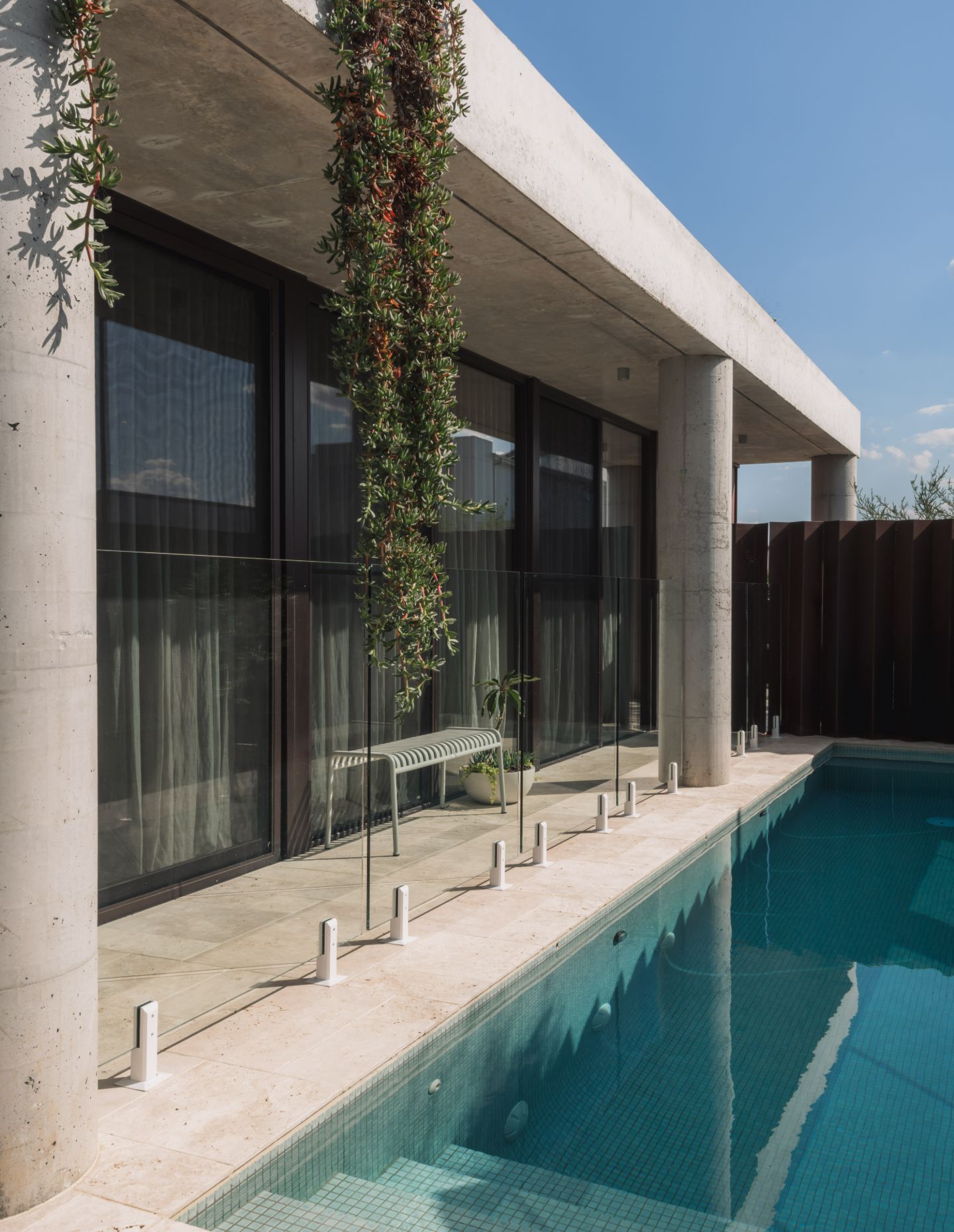
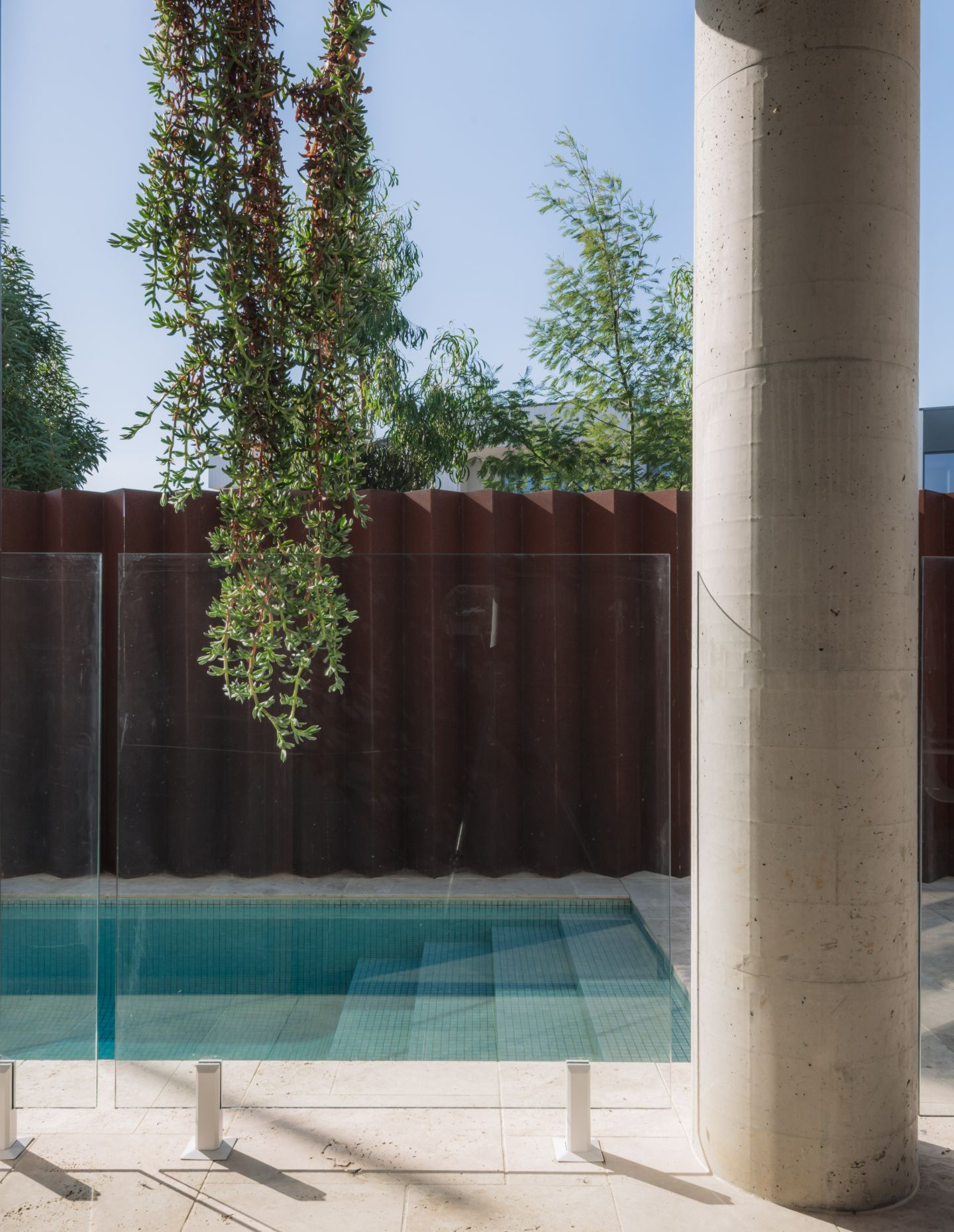
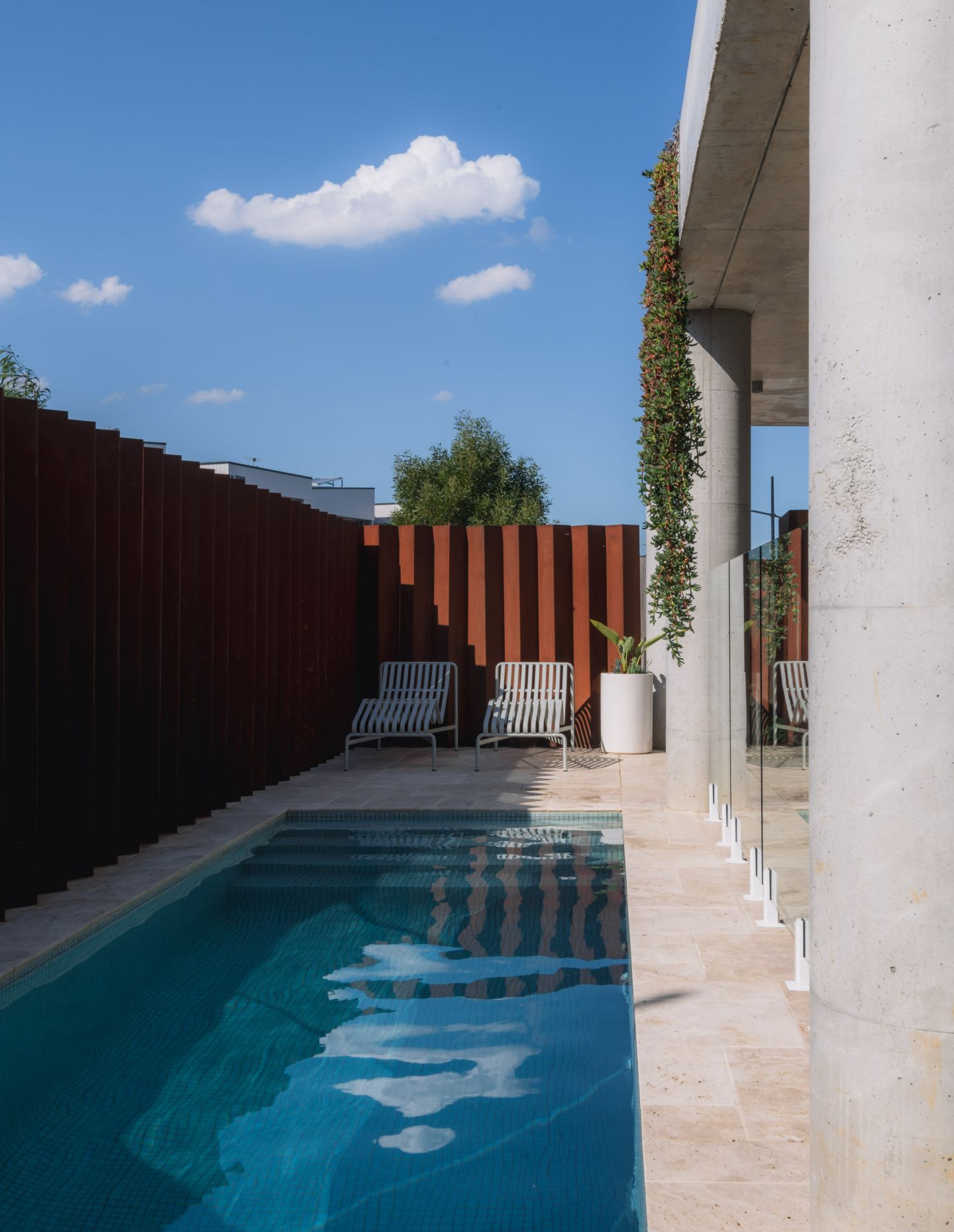
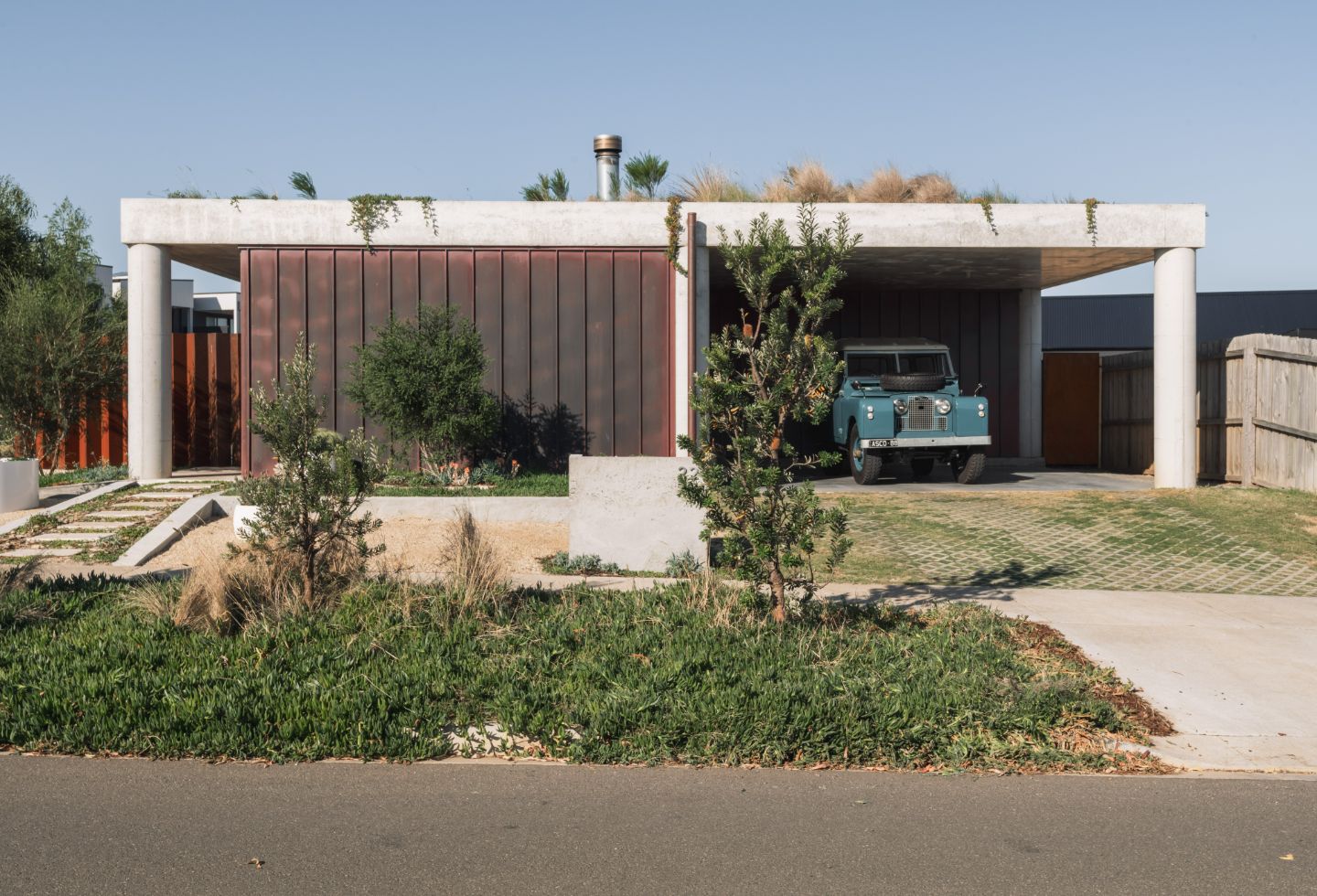
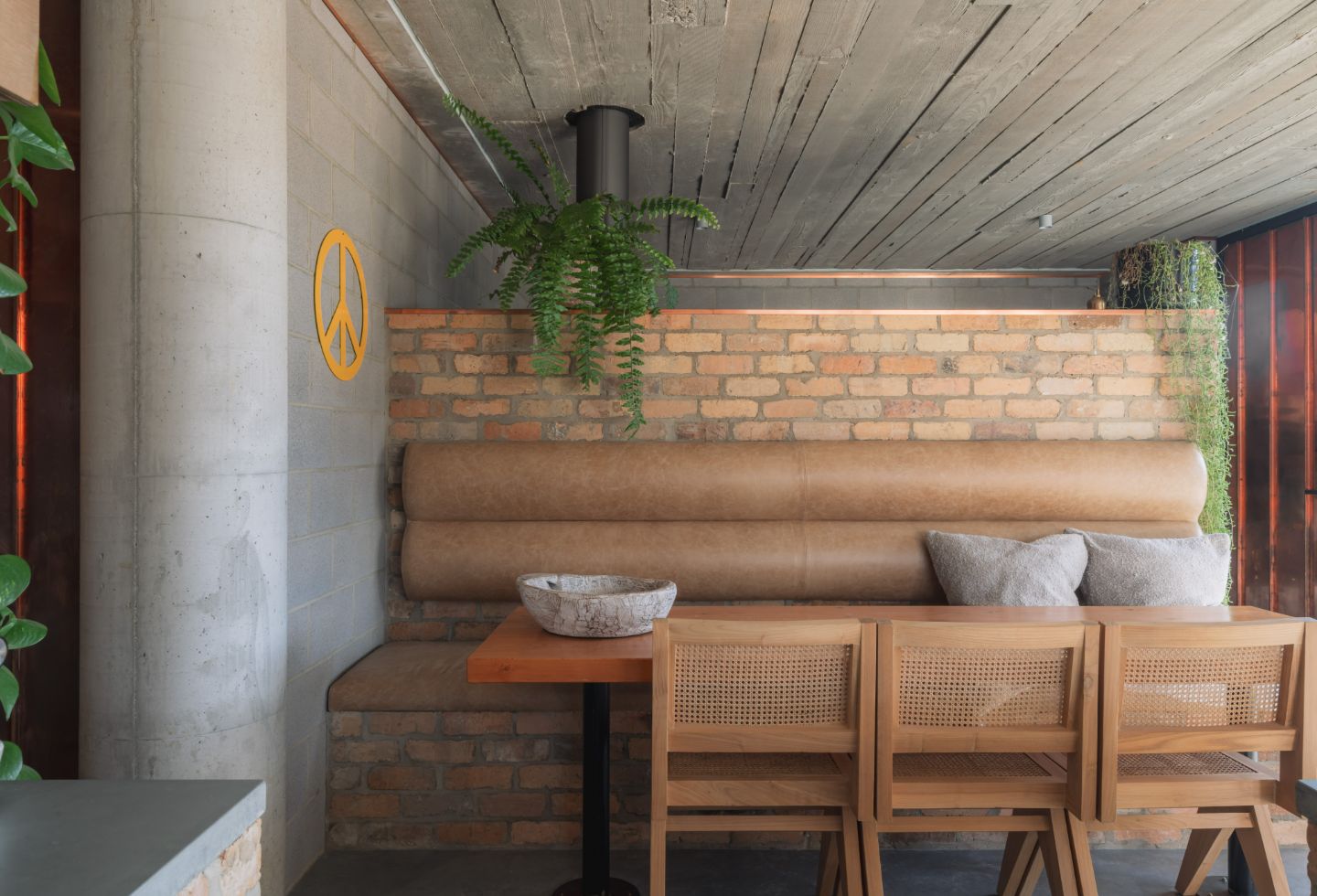
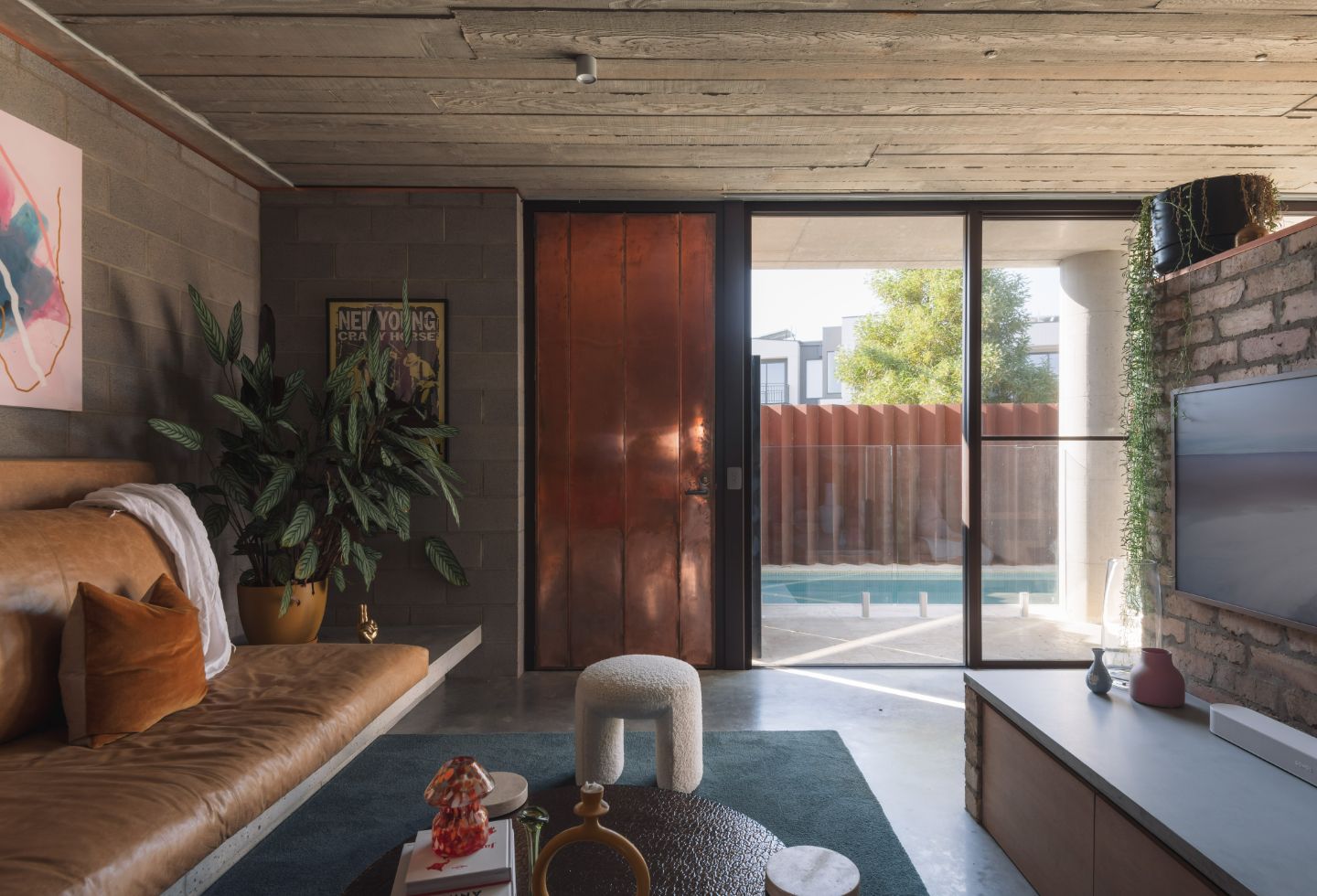

Next up: Marraweeney by Tom Robertson Architects balances experience with identity

